Abyaz Palace: The Ethnological Museum of Tehran
Step into a world where history whispers through magnificent architecture – Abyaz Palace, also known as the Ethnological Museum, a true wonder located in the heart of Tehran, Iran.
This is not just a palace; it's a portal to the past, where stories of generations past come alive amidst the striking fusion of traditional Persian opulence and contemporary design brilliance.
Abyaz Palace History and Background
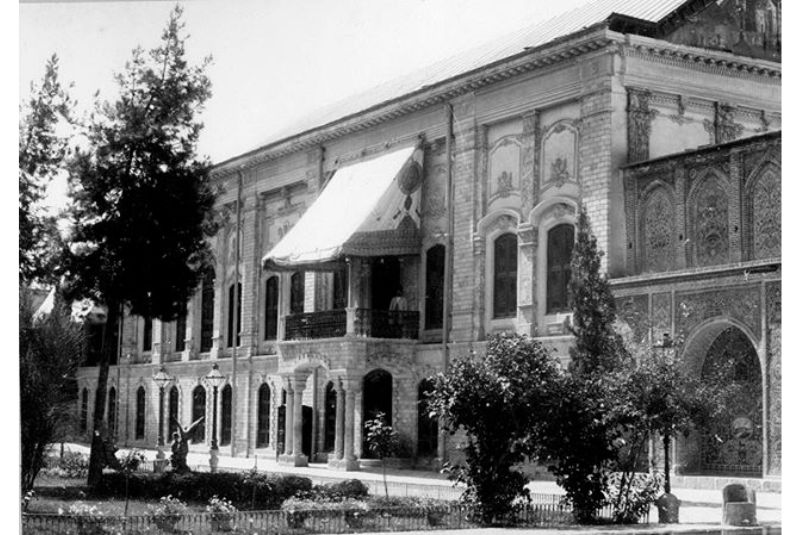
As Naser al-Din Shah's reign approached its end, a remarkable exchange unfolded between Shah Sultan Abd al-Hamid, the sovereign of the Ottoman Empire, and the Shah of Iran. During this period, a significant gesture of diplomatic goodwill transpired as Shah Sultan Abd al-Hamid presented a collection of precious and exquisite furniture to the Iranian Shah. This gracious offering held immense value, reflecting the diplomatic relations between the two empires.
However, a challenge arose as the existing palaces and regal chambers of Iran were already adorned with an abundance of paintings and furnishings, leaving little room for these cherished gifts. In response to this delightful predicament, Naser al-Din Shah, demonstrating his appreciation for the offerings and his innovative vision, chose to erect a brand-new palace.
This palace would find its distinguished place in the southwest corner of the esteemed Golestan Palace, where the Kolah Ferangi or Agha Mohammad Khani Tower had once stood.
The name "Abyaz," which translates to "white" in Persian, aptly describes the palace's stunning white facade, reflecting the elegance and grace that mark its presence in the city.
Under the reign of Reza Shah Pahlavi around 1934, the Abyaz Palace began to serve as a venue for governmental gatherings. In 1955, notable changes were implemented to prepare for the coronation of Mohammad Reza Shah Pahlavi. However, it wasn't until 1968 that the palace underwent a significant transformation, evolving into its current role as an Ethnological Museum.
| Discover: Isfahan Mosques You Should Visit
Architectural Features of Abyaz Palace
The Abyaz Palace stands as a true architectural masterpiece, captivating visitors with its exquisite details and harmonious design elements. From its façade to its interiors, every inch of the palace is a testament to the skill and creativity of the craftsmen who shaped it.
Intricate Designs and Ornamentation

As you approach the palace, you're greeted by an intricate façade adorned with delicate geometric patterns and ornate carvings. These designs, meticulously etched into the palace's surface, pay homage to the timeless artistry of Persian craftsmanship, setting the tone for the splendor that awaits within.
Domes and Archways
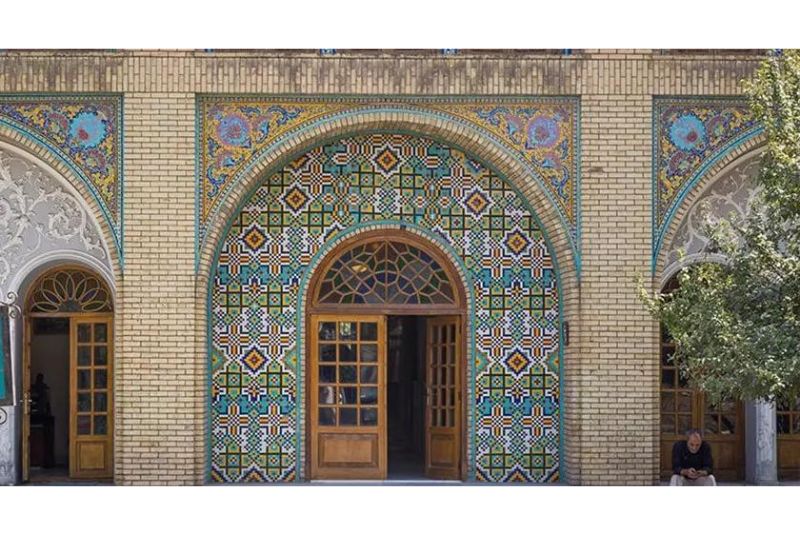
The Abyaz Palace boasts a series of elegant domes that grace its skyline, reminiscent of Iran's iconic architectural landmarks. These domes not only serve as architectural elements but also allow natural light to filter into the interior spaces, creating an ethereal ambiance that bathes the palace in a warm glow.
Courtyards of Tranquility
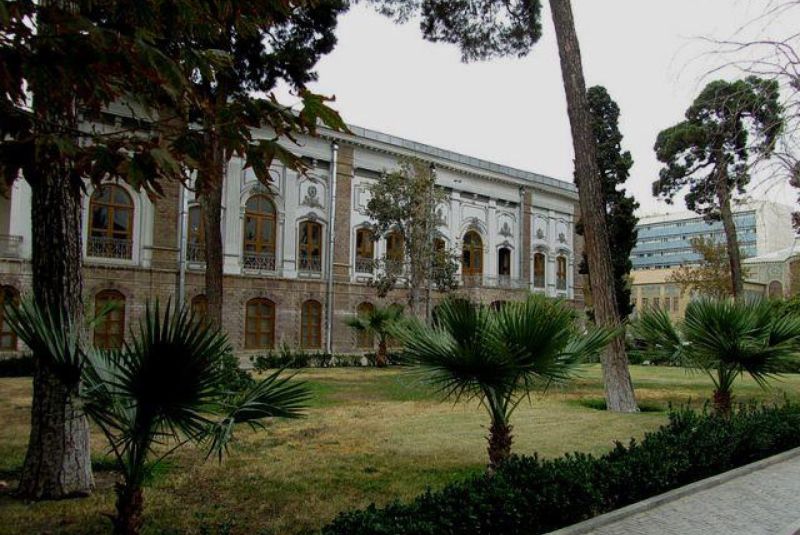
Step through the archways and find yourself within the tranquil courtyards that are the heart of the palace. These open spaces are adorned with flourishing gardens, bubbling fountains, and elegant arcades, evoking a sense of serenity amidst the bustling city. The courtyards provide an oasis for contemplation, a place where history and beauty converge.
The Ethnological Museum of Abyaz
Within the Abyaz Palace's interior lies a captivating assortment of displays and compilations, inviting guests to partake in a cultural journey through Iran's lively history. Every division of the museum reveals a wealth of treasures, artworks, and cultural artifacts, providing a mesmerizing peek into the intricate weave of the nation's diverse ethnicity.
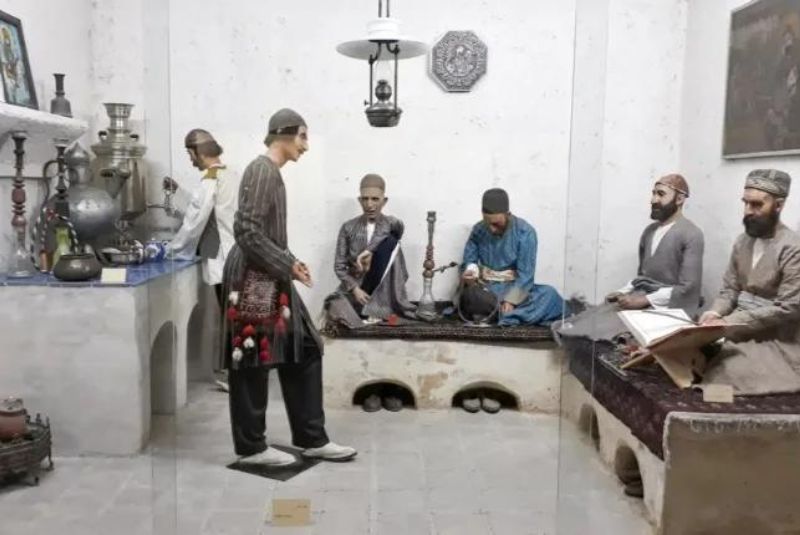
A defining feature of the Abyaz Palace is its steadfast commitment to ethnology—the study of cultures and human societies. As you explore its galleries, you'll be transported across the geographical and cultural landscapes of Iran's ethnic groups. The museum acts as a time machine, inviting you to experience the rituals, clothing, crafts, and ways of life that define these communities.
The collections within the museum are not merely static displays; they're living testaments to the myriad influences that have shaped Iran's history. From the ornate jewelry of the Qashqai nomads to the intricate carpets of the Bakhtiari tribes, every piece tells a story of perseverance, adaptation, and artistic brilliance.
Beyond its remarkable displays, the Abyaz Palace serves as an educational beacon, enlightening visitors about Iran's cultural richness and nurturing a spirit of cross-cultural understanding. Through guided tours, interactive exhibits, and workshops, visitors are invited to delve deeper into the stories behind the artifacts and the communities that crafted them.
| Discover: Chehel Sotoun Palace (Isfahan): A Comprehensive Guide
Main Sections of Abyaz Palace Museum
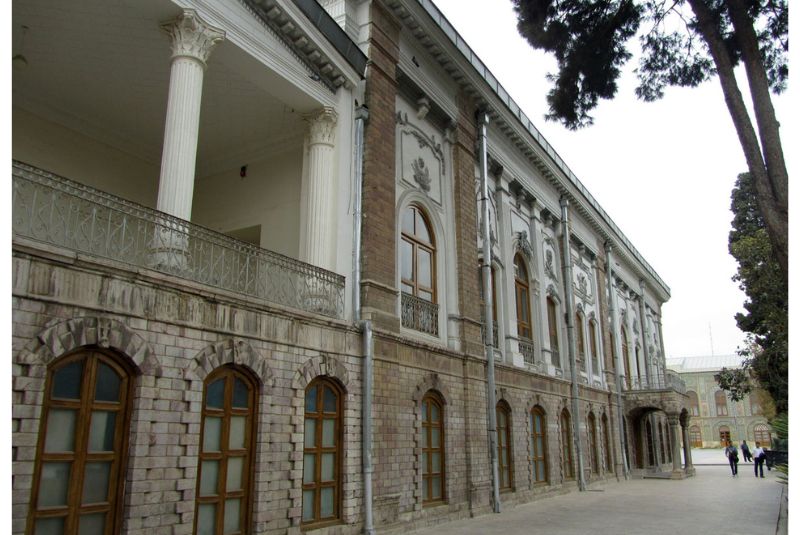
Each section in the Abyaz Palace takes you on a captivating journey, as you're not just observing history—you're living it, gaining insights into the intricate threads that form the fabric of Iran's cultural mosaic.
Nomadic Section: The Qashqai, Bakhtiari, and Kurdish cultures, their nomadic lifestyle and rich traditions. Woven carpets, vibrant textiles, and ornate jewelry reflect their nomadic heritage.
Tribal Rhythms: The Lur, Arab, and Baluch musical instruments, dance, and distinctive attire.
Rural Echoes: the Gilaki, Mazandarani, and Ghashghai communities, their agricultural traditions and their close connection with nature. Wooden handicrafts, pottery, and agricultural tools are on display, showcasing the fusion of functionality and artistry.
Urban Elegance: The refined urban cultures of Iran's major cities; Tehran, Isfahan, and Tabriz communities. The history of urban life; from opulent clothing and fine ceramics to elaborate silverware and delicate calligraphy.
Persian Gulf Shores: The vibrant Bandari textiles and intricately crafted Hormozgan masks.
Cross-Cultural Connections: The shared influences and artistic exchanges that have shaped Iran's cultural landscape over centuries.
Interactive Activities at Abyaz Palace Museum
The Abyaz Palace goes beyond traditional exhibitions, offering a dynamic and immersive experience through interactive displays.
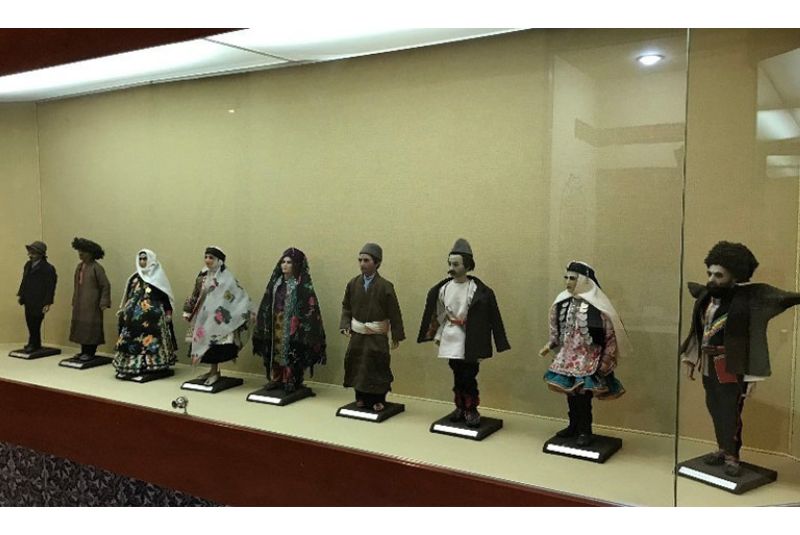
Hands-On Workshops
Unleash your inner artist through hands-on workshops that allow you to engage directly with traditional crafts. Try your hand at pottery, weaving, and calligraphy, guided by skilled artisans who are eager to share their expertise.
Ethnic Costume Try-On
Step into the shoes of Iran's various ethnic groups by donning traditional costumes available for try-on. Dress up in garments that reflect the Qashqai nomads, Baluch tribes, and more, capturing the essence of each culture's unique style.
Special Events and Festivals
The Abyaz Palace often hosts special events and festivals that celebrate Iran's cultural diversity. From traditional music performances to ethnic food festivals, these events offer a comprehensive experience that engages all your senses.
Interactive Multimedia Stations
Explore interactive multimedia stations that allow you to zoom in on artifacts, view historical photographs, and access additional information. This digital enhancement lets you delve deeper into the stories behind each exhibit and provides a multifaceted understanding of Iran's heritage.
Educational Discovery Stations
Designed with younger visitors in mind, the educational discovery stations offer engaging activities for children and families. These stations allow children to learn about traditional crafts, folk stories, and the daily lives of different ethnic groups in an interactive and entertaining manner.
Abyaz Palace Nearby Attractions

After your enriching experience at the Abyaz Palace, there are several nearby attractions you might consider exploring:
- Golestan Palace: Just a stone's throw away from Abyaz Palace, the UNESCO-listed Golestan Palace showcases opulent Persian architecture and lush gardens, providing a deeper understanding of Iran's historical grandeur.
- National Jewelry Museum: A short drive from Abyaz Palace, this museum houses an extraordinary collection of dazzling jewelry, including the iconic Peacock Throne and the world's largest pink diamond.
- Tehran Grand Bazaar: This is where you can shop for traditional crafts, spices, textiles, and more.
- Sa'dabad Complex: Explore the former royal summer residence, a sprawling complex of palaces and museums that offers a glimpse into the lives of Iran's royalty.
Best Times to Visit Abyaz Palace
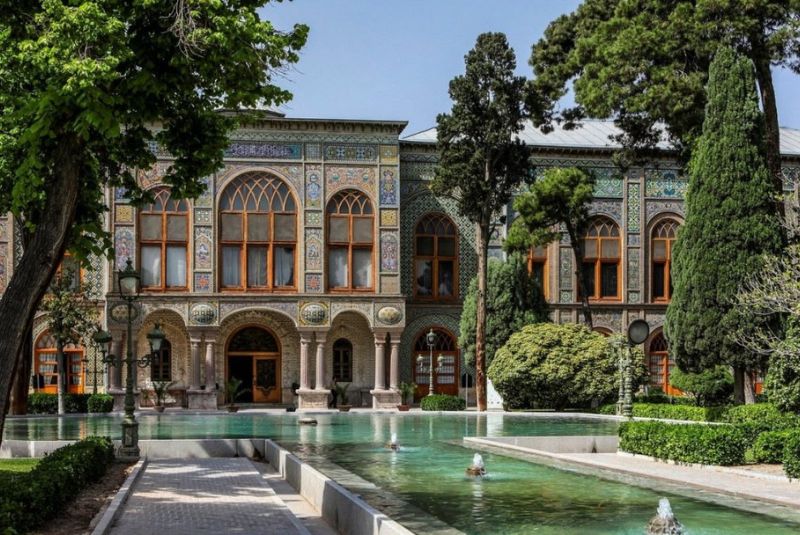
Weekdays, particularly from Tuesday to Thursday, tend to be less crowded compared to weekends. Visiting during these quieter periods will give you more space to appreciate the exhibits and explore the palace's sections at your own pace.
Iran's peak tourism seasons are during the spring (March to May) and autumn (September to November), when the weather is pleasant. While these times offer pleasant conditions for exploring, they might also bring larger crowds. If you prefer a quieter visit, consider the off-peak months.
Check the local event calendar to avoid visiting during public holidays or special events that might attract larger crowds.
Abyaz Palace Opening Hours and Entrance Fee
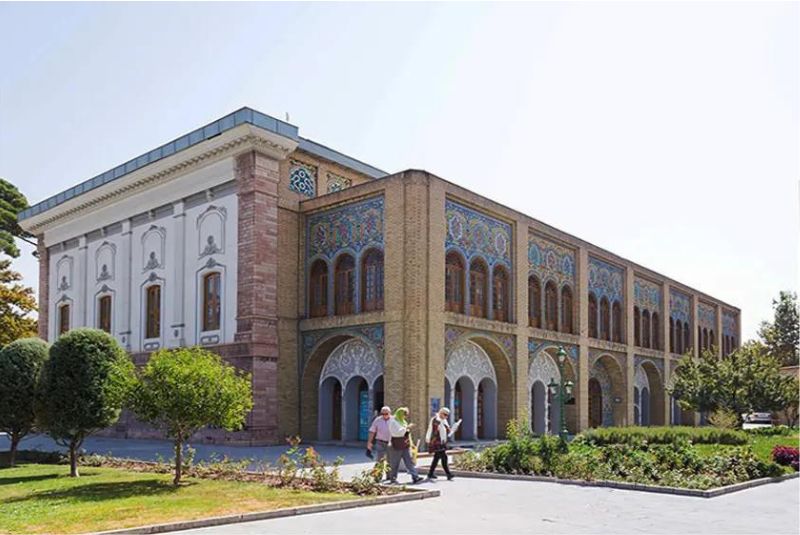
The Abyaz Palace is open to visitors from 9 AM to 7 PM and the last ticket is sold at 5:15 PM. Foreign visitors can enter the Abyaz Palace by purchasing a ticket for about 30 thousand Tomans.
To make the most of your experience at the Abyaz Palace, consider arriving early in the day, allowing you ample time to explore its galleries and engage with its interactive displays.
Bottom Line
The Abyaz Palace isn't merely a museum; it's a living repository of culture, a canvas upon which Iran's vibrant past is painted with intricate strokes of art, craftsmanship, and shared experiences.
We invite you to explore the Abyaz Palace, to be captivated by its architectural marvels, enchanted by its exhibitions, and touched by the stories it whispers. Whether you're a history enthusiast, an art lover, or a curious traveler, the palace invites you to engage with the richness of Iran's ethnic diversity.
Share your story!
Comment below and let us know about your Experience.
Your story inspires others!


Comment
Leave a Comment